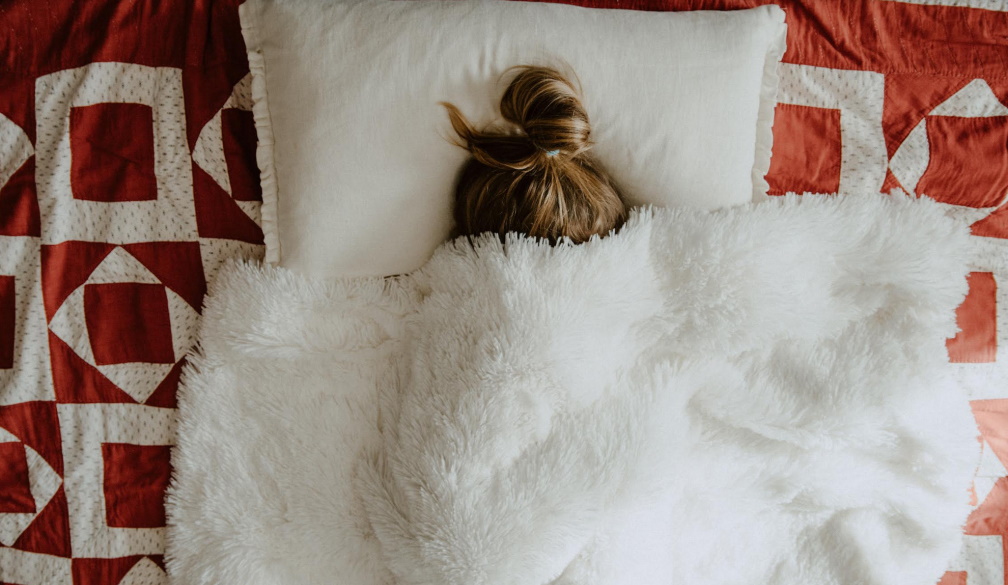What are cooling blankets? Can they really help me sleep?
- Written by Linda Grosser, Research Associate, Behaviour-Brain-Body Research Centre, University of South Australia

You wake up exhausted from yet another hot night of tossing and turning, with very little sleep.
So you might be tempted to buy a “cooling blanket” after reading rave reviews on social media. Or you might have read online articles with taglines such as[1]:
Stop waking up in a puddle of sweat with our roundup of the best cooling blankets – including a top-rated option from Amazon that ‘actually works’.
But what are cooling blankets? And can they help you get a restful night?
We know a cooler bedroom is best
First, let’s look at why a cooler environment helps us sleep better at night.
Our body’s internal temperature has a circadian rhythm[2], meaning it fluctuates throughout the day. A couple of hours before bed, it drops about 0.31°C[3] to help you fall asleep. It will drop about another 2°C[4] across the night to help you stay asleep.
During sleep, your internal temperature and skin work together to achieve a balance between losing and producing heat. Your skin has sensors that pick-up changes in the environment around you. If it gets too warm, these sensors let your body know, which may cause you to kick-off blankets or bed clothes and wake more often leading to poorer sleep quality.
Sleep quality[5] is an important component of sleep health ensuring you get the physical, mental and emotional benefits that come from a good night’s sleep.
The ideal temperature[6] for sleep varies depending on the season and type of bedding you have but falls between 17°C and 28°C. Keeping your sleeping environment within this range will help you to get the best night’s rest.
So what are cooling blankets?
Cooling blankets are designed to help regulate your body temperature while you sleep.
Different technologies and materials are used in their design and construction.
We’re not talking about hospital-grade[7] cooling blankets that are used to reduce fever and prevent injury to the nervous system. These use gel pads with circulating water, or air-cooling systems, connected to automatic thermostats to monitor someone’s temperature.
Instead, the type of consumer-grade cooling blankets you might see advertised use a blend of lightweight, breathable materials that draw moisture away from the skin to help you stay cool and dry through the night. They look like regular blankets.
Common materials include cotton, bamboo, silk or the fibre Lyocell[8], all of which absorb moisture.
Manufacturers typically use a thread count[9] of 300-500[10], creating air pockets that enhance airflow and moisture evaporation.
Some blankets feature a Q-Max rating[11], which indicates how cool the fabric feels against your skin. The higher the value, the cooler the fabric feels.
Others feature phase change materials[12]. These materials were developed by NASA[13] for space suits to keep astronauts comfortable during a spacewalk where temperatures are from roughly -157°C to 121°C[14]. Phase change materials in cooling blankets absorb and hold heat producing a cooling effect.
Do they work?
If you believe online reviews, yes, cooling blankets can cool you down and help you sleep better in warmer weather or if you get too hot using normal sheets and blankets.
However, there is little scientific research to see if these consumer-grade products work.
In a 2021 study[16] exploring sleep quality, 20 participants slept for three nights under two different conditions.
First, they slept with regular bed sheets in an air-conditioned room with the temperature set to their preference. Then, they used cooling bed sheets in an air-conditioned room where the temperature was set 3°C higher than their preference.
Participants reported good sleep quality in both conditions but preferred the warmer room with its cooling sheets.
This may suggest the use of cooling bedding may help provide a more comfortable night’s sleep.
But everyone’s cooling needs varies depending on things like age, health, body temperature, the space you sleep in, and personal preferences.
So while these products may work for some people who may be motivated to leave a good review, they may not necessarily work for you.
Are they worth it?
There’s a wide variety of cooling blankets available at different prices to suit various budgets. Positive customer reviews might encourage a purchase, especially for individuals experiencing disrupted sleep at night due to heat.
Yet, these cooling blankets have limited scientific research to show they work and to say if they’re worth it. So it’s up to you.
What else can I do if I’m a hot sleeper?
If a cooling blanket isn’t for you, there are other things you can do to stay cool at night, such as:
-
using air conditioning or a fan
-
placing a damp towel under or over you
-
wearing lightweight or minimal sleepwear and avoiding thick or synthetic fabrics, such as nylon, that can trap heat
-
if you usually share a bed, on hot nights, consider sleeping by yourself to avoid excess body heat from your partner.
On a final note, if you often struggle with hot, disturbed sleep, you can check in with your health-care provider. They can see if there is a medical explanation for your disturbed sleep and advise what to try next.
References
- ^ taglines such as (www.news.com.au)
- ^ circadian rhythm (www.sleepfoundation.org)
- ^ 0.31°C (www.sciencedirect.com)
- ^ another 2°C (pmc.ncbi.nlm.nih.gov)
- ^ Sleep quality (www.thensf.org)
- ^ ideal temperature (www.sciencedirect.com)
- ^ hospital-grade (pmc.ncbi.nlm.nih.gov)
- ^ Lyocell (goodonyou.eco)
- ^ thread count (www.sleepfoundation.org)
- ^ 300-500 (www.trustsleep.com)
- ^ Q-Max rating (getrest.com.au)
- ^ phase change materials (www.trustsleep.com)
- ^ NASA (spinoff.nasa.gov)
- ^ -157°C to 121°C (www.nasa.gov)
- ^ Summit Art Creations/NASA/Shutterstock (www.shutterstock.com)
- ^ study (www.mdpi.com)
- ^ Screenshot Google Shopping (www.google.com)
Read more https://theconversation.com/what-are-cooling-blankets-can-they-really-help-me-sleep-244158

















